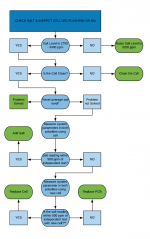- Mar 11, 2015
- 1,864
- Pool Size
- 20000
- Surface
- Vinyl
- Chlorine
- Salt Water Generator
- SWG Type
- Hayward Aqua Rite (T-15)
Update:
Today the new T15 cell seems to be working fine on the T15 setting. Out of curiosity, I tried another test using the K1766 Taylor kit, being very careful, making sure to mix very well between drops, and dispensing drops slowly to ensure proper drop size. It’s still reading 1000ppm above what the SWCG is reporting. I‘m pretty confident that if the level was in fact 4000ppm as reported by the K1766, I would notice a saltier taste in the water, but I‘m not noticing a saltier taste at all (I can usually start noticing it at about 3200ppm). When my new K1766 reagents arrive I’ll try the test again.
I‘m pretty confident that if the level was in fact 4000ppm as reported by the K1766, I would notice a saltier taste in the water, but I‘m not noticing a saltier taste at all (I can usually start noticing it at about 3200ppm). When my new K1766 reagents arrive I’ll try the test again.
I wish I would have thought to post the current diagnostic settings. I‘ll try to remember to do that tomorrow.
Today the new T15 cell seems to be working fine on the T15 setting. Out of curiosity, I tried another test using the K1766 Taylor kit, being very careful, making sure to mix very well between drops, and dispensing drops slowly to ensure proper drop size. It’s still reading 1000ppm above what the SWCG is reporting.
I wish I would have thought to post the current diagnostic settings. I‘ll try to remember to do that tomorrow.


